Dunk
Established
In March 2007 I made an offer on a Contarex Bullseye camera outfit comprising Bullseye body (also known as Cyclops), 50mm f2 Planar, 35mm f4 Distagon, 85mm f2 Sonnar, 135mm f4 Sonnar and 21mm f4.5 Biogon plus two interchangeable film magazine backs c/w dark slides, bellows and filters. I offered less than one third the advertised price because all the lenses appeared to have the dreaded fungus and I was taking a chance that any of them would be capable of being cleaned/polished and recoated. At the time I was only interested in having the 21mm lens serviced and having it converted to a Leica M mount. The 21mm Biogon is a scarce and much sought after lens. Much to my surprise the dealer (London Camera Exchange in the Strand, London) accepted my low offer and I struggled home with outfit ... it was much heavier than anticipated. I then approached a specialist lens refurbishment company (whose name I'll not reveal for fear of embarrassing them) and much to my amazement they offered to give an estimate to clean/polish/recoat all the lenses (ie the glass lens elements) and also service the camera. The camera and lenses were sent to them, estimate received and agreed and thus began what turned out to be a very long wait for the jobs to be finished. Each time I chased them as the months went by the same excuse was given ie "Two of the lenses are totally jammed and we cant dismantle them". Eventually last September they advised that they could not service the jammed lenses but that the others were almost ready .... and the camera body service was finished but they could not source a replacement selenium meter cell for it. When I asked why the work had taken so long the technician replied, "I told you he died!" ... presumably he was referring to his colleague but he had not told me that. Last month I again chased them and was finally advised they would prepare an invoice which was received and paid last week. The following were thus received back last Friday.
Let's start with the jammed / fungused lenses which have not been serviced because they are jammed solid ie focusing rings are immovable. All the other lenses' elements looked like these when I bought them. But I have now discovered it is NOT fungus ... it is lens grease lubricant which has evaporated from the helicoil and condensed onto the glasses ... leaving a glue-like residue on the helicoil which has jammed solid . The grease originally used is peculiar to Zeiss Ikon in 1959/60 and has this property.
Thus this is the jammed 135mm Sonnar which cannot be serviced

And this is the same lens with the similarly jammed 35mm Distagon which also cannot be serviced

Now for the good news.
This is the beautiful and scarce 21mm f4.5 Biogon with its lens' surfaces repolished and recoated together with the dedicated 21mm viewfinder
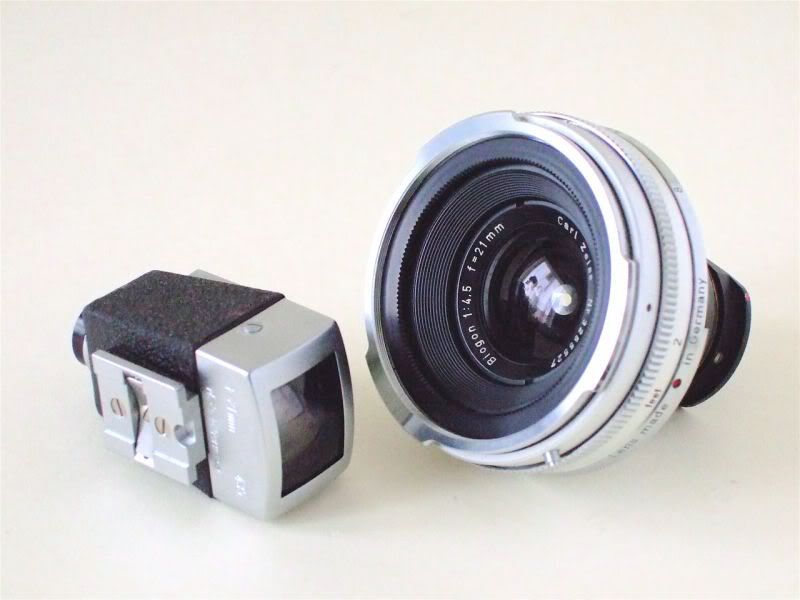
And this is the same 21 mm f4.5 Biogon and viewfinder on the Cyclops camera ... the "Cyclops" eye is in fact the exposure meter. The lens mount is so long that it can only be used on the body with the mirror locked up ... hence the need for the viewfinder in the accessory shoe.

And here are the three lenses which have been successfully serviced ie dismantled, cleaned, polished and recoated - but not every lens element required recoating. The 50mm Planar was also showing signs of balsam separation so the elements were "split" and recemented using a special jig.

This shows the 85mm Sonnar on the Cyclops body

Note the 50mm and 85mm lenses do not have aperture rings. The lens diaphragm is coupled to a cam arrangement in the rear of the lens interior which is coupled and activated by the finger operated wheel behind the Contarex logo on the body.
Here is the 85mm Sonnar attached to the bellows. The bellows is actually made by Novoflex.

And here are two interchangeable film backs for the camera complete with dark slides. These enabled the use of different types of films with just one camera body.

The camera is fitted with an ordinary non-DS back at present but the DS magazines can be substituted enabling change of film "mid-roll".
The Contarex was and maybe still is the most complicated mechanical camera ever made and has approx. 1200 parts. Although popular in Germany in the early 60s it did not sell well because it was so expensive and heavy. Also, at that time the first Nikon F models began to dominate the professional 35mm camera market because they were cheaper, more reliable and offered a more comprehensive system ie more lenses and accessories.
However, some authorities maintain that the quality of Zeiss Contarex lenses has never been surpassed both optically and mechanically.
I'm looking forward to using the camera soon and may obtain a Contarex to 4/3 adaptor thus enabling use of the 50mm, and 85mm lenses on a 4/3 digital body. I think the 21mm lens will be too long to adapt for digital use.
Two years was a long time to wait but just to have the 21mm lens has been worth the wait.
Total cost for the work was £266.80.
Cheers
dunk
Let's start with the jammed / fungused lenses which have not been serviced because they are jammed solid ie focusing rings are immovable. All the other lenses' elements looked like these when I bought them. But I have now discovered it is NOT fungus ... it is lens grease lubricant which has evaporated from the helicoil and condensed onto the glasses ... leaving a glue-like residue on the helicoil which has jammed solid . The grease originally used is peculiar to Zeiss Ikon in 1959/60 and has this property.
Thus this is the jammed 135mm Sonnar which cannot be serviced

And this is the same lens with the similarly jammed 35mm Distagon which also cannot be serviced

Now for the good news.
This is the beautiful and scarce 21mm f4.5 Biogon with its lens' surfaces repolished and recoated together with the dedicated 21mm viewfinder

And this is the same 21 mm f4.5 Biogon and viewfinder on the Cyclops camera ... the "Cyclops" eye is in fact the exposure meter. The lens mount is so long that it can only be used on the body with the mirror locked up ... hence the need for the viewfinder in the accessory shoe.

And here are the three lenses which have been successfully serviced ie dismantled, cleaned, polished and recoated - but not every lens element required recoating. The 50mm Planar was also showing signs of balsam separation so the elements were "split" and recemented using a special jig.

This shows the 85mm Sonnar on the Cyclops body

Note the 50mm and 85mm lenses do not have aperture rings. The lens diaphragm is coupled to a cam arrangement in the rear of the lens interior which is coupled and activated by the finger operated wheel behind the Contarex logo on the body.
Here is the 85mm Sonnar attached to the bellows. The bellows is actually made by Novoflex.

And here are two interchangeable film backs for the camera complete with dark slides. These enabled the use of different types of films with just one camera body.

The camera is fitted with an ordinary non-DS back at present but the DS magazines can be substituted enabling change of film "mid-roll".
The Contarex was and maybe still is the most complicated mechanical camera ever made and has approx. 1200 parts. Although popular in Germany in the early 60s it did not sell well because it was so expensive and heavy. Also, at that time the first Nikon F models began to dominate the professional 35mm camera market because they were cheaper, more reliable and offered a more comprehensive system ie more lenses and accessories.
However, some authorities maintain that the quality of Zeiss Contarex lenses has never been surpassed both optically and mechanically.
I'm looking forward to using the camera soon and may obtain a Contarex to 4/3 adaptor thus enabling use of the 50mm, and 85mm lenses on a 4/3 digital body. I think the 21mm lens will be too long to adapt for digital use.
Two years was a long time to wait but just to have the 21mm lens has been worth the wait.
Total cost for the work was £266.80.
Cheers
dunk
Last edited:
Spider67
Well-known
266 GBP? That does not seem so high for what other ppl demand for simpler things.
Could it be that someone there saw it as his personal mission to save the kit?
Great camera and great lens outfit! perhaps you could find someone to make a customized adapter fro the 21 for your RF's?
Greetings from Vienna
Des
Could it be that someone there saw it as his personal mission to save the kit?
Great camera and great lens outfit! perhaps you could find someone to make a customized adapter fro the 21 for your RF's?
Greetings from Vienna
Des
Dunk
Established
266 GBP? That does not seem so high for what other ppl demand for simpler things.
Could it be that someone there saw it as his personal mission to save the kit?
Great camera and great lens outfit! perhaps you could find someone to make a customized adapter fro the 21 for your RF's?
Greetings from Vienna
Des
Hi Des, I suspect that the original estimate was on the low side. Maybe the original technician who gave me the estimate made a mistake and after he died perhaps they were obliged to stick with his figure?
Cheers
dunk
furcafe
Veteran
Agreed that 266 pounds was a relative bargain for the amount of work done (albeit over an excessive amount of time).
I love my Contarex bodies & lenses. I haven't found them to any significantly heavier or more difficult to use than other vintage pro-level SLRs (e.g., a Nikon F or F2 w/metered head is similar in weight to the Bullseye/Cyclops), but I do prefer the slightly lighter non-metered bodies (Special & Professional), which also have slightly brighter VFs.
They are quirky, though. My only real complaints are that I don't like the fact that the diaphragm doesn't automatically open after exposure (it opens up when you advance the film) & I still occasionally inadvertently change the aperture when I accidentally brush the dial.
I love my Contarex bodies & lenses. I haven't found them to any significantly heavier or more difficult to use than other vintage pro-level SLRs (e.g., a Nikon F or F2 w/metered head is similar in weight to the Bullseye/Cyclops), but I do prefer the slightly lighter non-metered bodies (Special & Professional), which also have slightly brighter VFs.
They are quirky, though. My only real complaints are that I don't like the fact that the diaphragm doesn't automatically open after exposure (it opens up when you advance the film) & I still occasionally inadvertently change the aperture when I accidentally brush the dial.
Last edited:
Dunk
Established
Also have this Minolta 21mm f4.5 W Rokkor lens (copy of the Zeiss?) but do not yet have a "mirror up" Minolta camera to try it with. Will be interesting to compare the Minolta's results with those of the Zeiss 21mm f4.5 Biogon . The Minolta lens also dates from the early 60s.

Both the Zeiss and Minolta 21mm lenses would be fairly easy to adapt to a Leica M body and being non-retrofocus the performance of each should be good even though they are over 40 years old.
Cheers
dunk

Both the Zeiss and Minolta 21mm lenses would be fairly easy to adapt to a Leica M body and being non-retrofocus the performance of each should be good even though they are over 40 years old.
Cheers
dunk
amoebahydra
Established
... I'm looking forward to using the camera soon and may obtain a Contarex to 4/3 adaptor thus enabling use of the 50mm, and 85mm lenses on a 4/3 digital body. I think the 21mm lens will be too long to adapt for digital use...
Contarex Planar 50/2 flashmatic on Olympus E330 4/3 body with the help of a custom adapter.
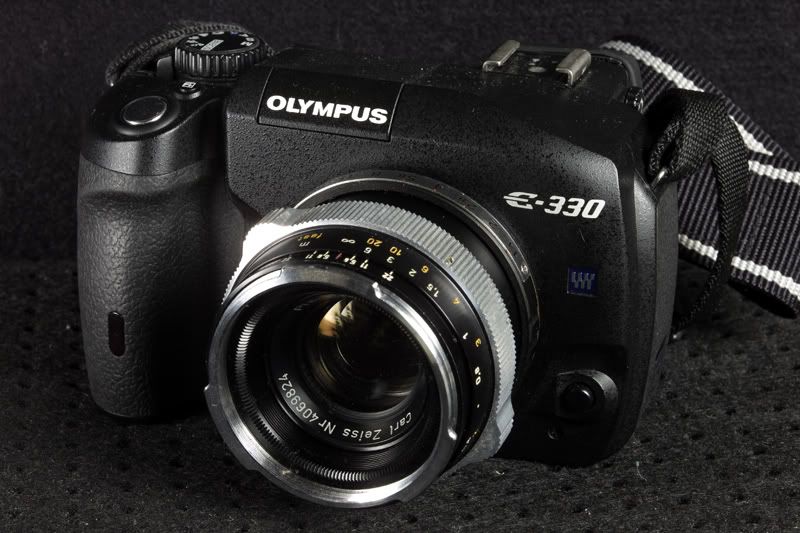
Dunk
Established
Interesting combination amoebahydra. Where did you purchase the adaptor? Do you have any photo results?
Cheers
dunk
Cheers
dunk
peterm1
Veteran
The Contarex "bullseye" is perhaps my favorite camera of all time. The camera is legendary as are the lenses. You were very lucky. I will bear in mind the knowledge that Contarex lens lube has the property of getting on glass and looking like fungus in case the gods of fate and cameras are ever so kind to me as to put one in my path. The closest I came was twenty years ago when I found in a drawer of an old style camera store (the owner was savvy enough to know that if he let me rummage around in it I would eventually find something to buy) I found a bayonet mounted UV filter for a Contarex planar lens. I bought it as I knew I would never see and other and thought "just in case. just in case...." But no, I have never found the bargain of the lens it goes on or the camera for that matter.
amoebahydra
Established
Interesting combination amoebahydra. Where did you purchase the adaptor? Do you have any photo results?
Cheers
dunk
My adaptor was custom made in Hong Kong. Sample photos taken with Olympus E330 and Contarex Sonnar 2/85 lens...
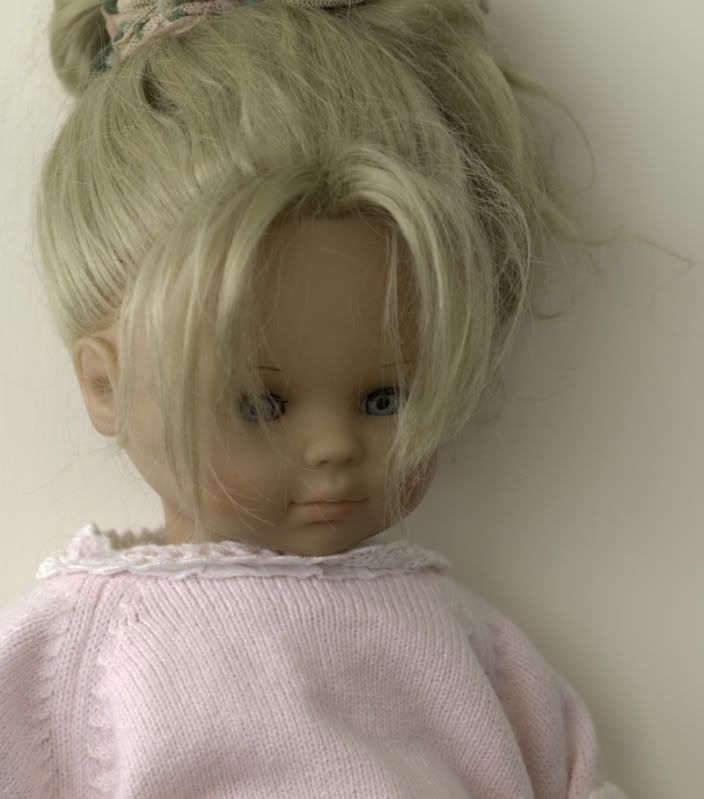
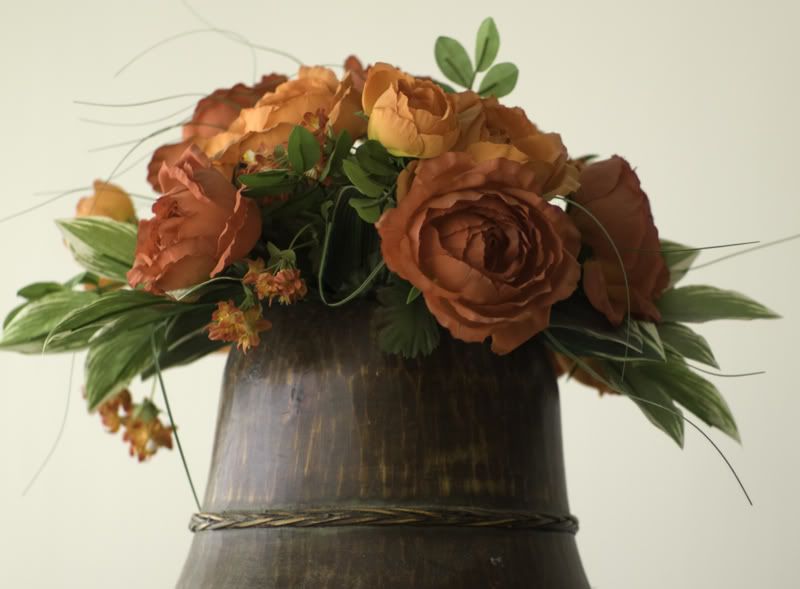
Dunk
Established
I'm considering getting an adaptor and have seen two ... one is for 4/3 format and one is for Leica M ... also considering having the 21mm Biotar semi-permanently converted to Leica M .
Thanks for the interesting photos.
Cheers
dunk
Thanks for the interesting photos.
Cheers
dunk
raid
Dad Photographer
Also have this Minolta 21mm f4.5 W Rokkor lens (copy of the Zeiss?) but do not yet have a "mirror up" Minolta camera to try it with. Will be interesting to compare the Minolta's results with those of the Zeiss 21mm f4.5 Biogon . The Minolta lens also dates from the early 60s.

Both the Zeiss and Minolta 21mm lenses would be fairly easy to adapt to a Leica M body and being non-retrofocus the performance of each should be good even though they are over 40 years old.
Cheers
dunk
I have a Minolta-LTM adapter! I could use this lens!
I have a mintish Pentax 17mm 4.0 K mount lens, if anyone is interested for a trade.
Last edited:
Dunk
Established
My Minolta 21mm is a prized optic and one ot the few lenses made with the manufacturer's own glass ... I'm looking for a hood for it.
Cheers
dunk
Cheers
dunk
raid
Dad Photographer
My Minolta 21mm is a prized optic and one ot the few lenses made with the manufacturer's own glass ... I'm looking for a hood for it.
Cheers
dunk
Good for you, dunk. We joke around here.
The lens looks great. There are currently three such lenses offered on ebay.
Last edited:
Dunk
Established
I succeeded in dismantling the jammed 135mm lens. Thus the main part of the jammed focusing mount minus lens module and diaphragm module can now be soaked on Ronsonol lighter fluid to try and dissolve the solidified grease. This will be achieved by immersing the mount in a Pyrex dish full of Ronsonol and sealing it with a plastic bag and rubber band to prevent evaporation - and will be left outside in the garden to soak for a couple of days because of the fire risk indoors.
The residual oil has condensed on the rear of the front lens element(s) and looks as if it might clean off if the module can be dismantled. But if the front elements are cemented together and the oil has penetrated the cement the cleaning might not be be possible ... I'm in unknown territory. It is possible to split cemented elements but they will require soaking in acetone for days ... or heating. Will let you know how the project progresses.
These are the main components after dismantling. In the first picture the diaphragm module on the left is very clean and the diaphragm operates smoothly. The focusing mount ie the lens barrel at the rear has a completely jammed focusing ring.

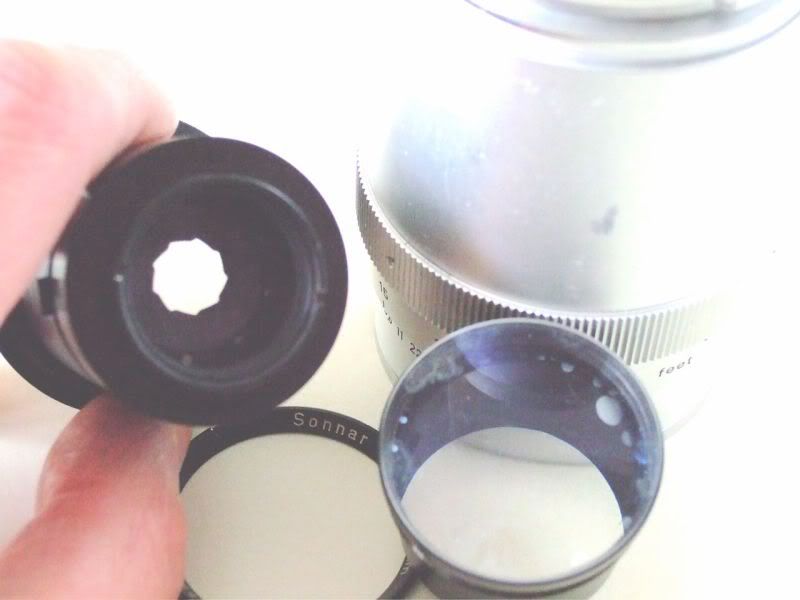
The front lens element(s) in the module show the condensed oil deposits

Now have to try and dismantle the actual lens module which comprises several glass elements in their housing . Any ideas as to how to proceed with this will be very much appreciated
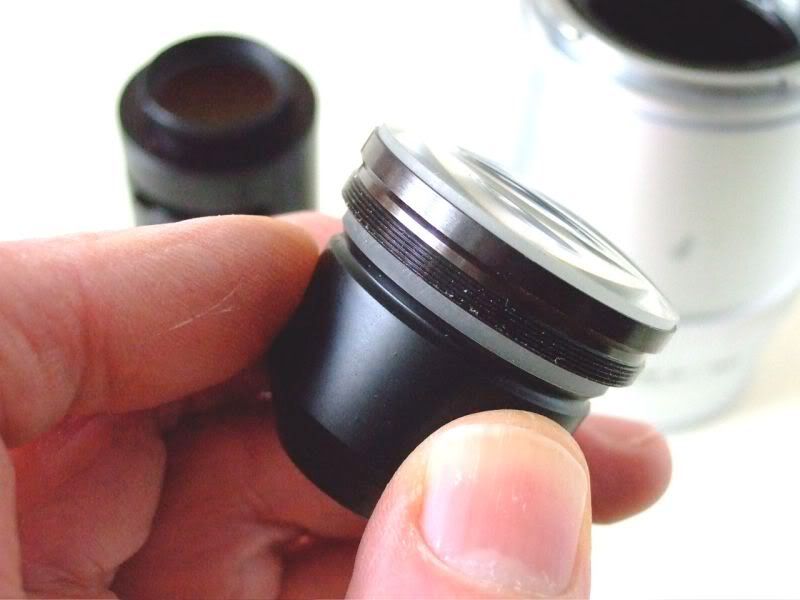
The rear lens elements are quite clean

When the lens was away for service no work was done on it because of the jammed mount. Will be a good achievement if I can succeed where they did not. Interesting learning process too.
Nothing ventured - nothing gained.
Cheers
dunk
The residual oil has condensed on the rear of the front lens element(s) and looks as if it might clean off if the module can be dismantled. But if the front elements are cemented together and the oil has penetrated the cement the cleaning might not be be possible ... I'm in unknown territory. It is possible to split cemented elements but they will require soaking in acetone for days ... or heating. Will let you know how the project progresses.
These are the main components after dismantling. In the first picture the diaphragm module on the left is very clean and the diaphragm operates smoothly. The focusing mount ie the lens barrel at the rear has a completely jammed focusing ring.


The front lens element(s) in the module show the condensed oil deposits

Now have to try and dismantle the actual lens module which comprises several glass elements in their housing . Any ideas as to how to proceed with this will be very much appreciated

The rear lens elements are quite clean

When the lens was away for service no work was done on it because of the jammed mount. Will be a good achievement if I can succeed where they did not. Interesting learning process too.
Nothing ventured - nothing gained.
Cheers
dunk
Dunk
Established
Have made some progress ...
After extracting front element "A" with a suction cup, the anulus surrounding elements "B" and "C" twisted off ... here are the components ... the fourth lens element is in the rear of the diaphragm tube and it is quite clean

Close up of the module comprising elements "B" and "C" together with the anulus which twisted off with firm finger/thumb pressure.


Now I have to 'split' the above elements "B" and "C" so as to clean the oil spots which have penetrated the cement
This diagram shows the middle elements "B" and "C" which need separating. The rear element "D" is in the rear of the tubular diaphragm mount. The join between "B" and 'C" is probably at the waist of the exterior metal sheath.
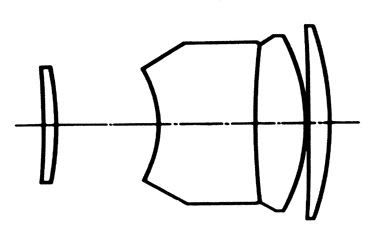
Close-up of the front of lens element "B" showing the oil stains in the cement between element "B" and "C" . Now wondering if the stains are in fact oil ... Could they indicate balsam separation?

Splitting lens elements is something I have not attempted previously but seem to recall that the cement can be softened using acetone ie nail varnish remover ... but it takes DAYS to penetrate.
Reading Thomas Tomosy's books he advocates separation by heating the elements with a hair drier for about an hour ... after fabricating an enclosure to keep the heat in ... will try this method and hope it works ... it may not work if the cement is not Canada balsam ... but vintage Contarex lenses are so prone to balsam faults that it seems likely that Canada balsam was in use in the mid 50s.
Once the elements are apart it should be possible to clean the residual cement and the oil stains using acetone and then re-cement them together.
I think Surplus Shed sells optical cement ... maybe not the same refractive index as Zeiss' original cement but maybe it will do the job.
This lens was going to be trashed but maybe it can be salvaged ... if the lens elements come apart and clean up ok then just have the focusing mount to free-up ... have not started the focusing mount soak yet.
Cheers
dunk
After extracting front element "A" with a suction cup, the anulus surrounding elements "B" and "C" twisted off ... here are the components ... the fourth lens element is in the rear of the diaphragm tube and it is quite clean

Close up of the module comprising elements "B" and "C" together with the anulus which twisted off with firm finger/thumb pressure.


Now I have to 'split' the above elements "B" and "C" so as to clean the oil spots which have penetrated the cement
This diagram shows the middle elements "B" and "C" which need separating. The rear element "D" is in the rear of the tubular diaphragm mount. The join between "B" and 'C" is probably at the waist of the exterior metal sheath.

Close-up of the front of lens element "B" showing the oil stains in the cement between element "B" and "C" . Now wondering if the stains are in fact oil ... Could they indicate balsam separation?

Splitting lens elements is something I have not attempted previously but seem to recall that the cement can be softened using acetone ie nail varnish remover ... but it takes DAYS to penetrate.
Reading Thomas Tomosy's books he advocates separation by heating the elements with a hair drier for about an hour ... after fabricating an enclosure to keep the heat in ... will try this method and hope it works ... it may not work if the cement is not Canada balsam ... but vintage Contarex lenses are so prone to balsam faults that it seems likely that Canada balsam was in use in the mid 50s.
Once the elements are apart it should be possible to clean the residual cement and the oil stains using acetone and then re-cement them together.
I think Surplus Shed sells optical cement ... maybe not the same refractive index as Zeiss' original cement but maybe it will do the job.
This lens was going to be trashed but maybe it can be salvaged ... if the lens elements come apart and clean up ok then just have the focusing mount to free-up ... have not started the focusing mount soak yet.
Cheers
dunk
Last edited:
Okay- just looking at where the oil stains are- it might not be worth the trouble to separate and recement them vs just using as is. The stains are on the edges. I've used a lot worse, with little or no effect on the image. I'm wondering if they are even in the optical path at all with the lens wide-open.
Dunk
Established
Okay- just looking at where the oil stains are- it might not be worth the trouble to separate and recement them vs just using as is. The stains are on the edges. I've used a lot worse, with little or no effect on the image. I'm wondering if they are even in the optical path at all with the lens wide-open.
They are worse than they look in the photos ...
dunk
Okay... I once had a Canon 135/3.5 RF lens, also the Sonnar forumula shown. The cemented pair was opaque. I separated it with 99% Isopropyl alchohol, cleaned off the Balsam, and used index matching oil to put it back together. I call it the "Cheese-Wiz" solution. All you are doing is getting rid of Newton's Rings. The glass is so perfectly matched, that the "suction" held it together. After over 5 years, it is perfectly usable.
Dunk
Established
Thanks for your input Brian but I prefer to try and clean the lens surfaces ... especially after what I have read elsewhere regarding the problems with the oil and the resultant effects on light transmission. The lens is probably usable but it will give better results when ALL the debris between the two elements is cleaned off. This is a quality lens and deserves to be cleaned/restored especially so that it is usable at full aperture.
Cheers
dunk
Cheers
dunk
normclarke
normclarke
Optical cement
Optical cement
Hi Dunk,
As I believe you are in the U.K. Maplin stock an ultra violet curing optical cement that would solve your problem. It is called Bondloc, I have used it several times with success. I also have some Canada Balsam which you are welcome to try, that is if you can go through the hassle of heating the elements to cure it properly.
Keep up the good work,
normclarke.
Optical cement
Hi Dunk,
As I believe you are in the U.K. Maplin stock an ultra violet curing optical cement that would solve your problem. It is called Bondloc, I have used it several times with success. I also have some Canada Balsam which you are welcome to try, that is if you can go through the hassle of heating the elements to cure it properly.
Keep up the good work,
normclarke.
Share:
-
This site uses cookies to help personalise content, tailor your experience and to keep you logged in if you register.
By continuing to use this site, you are consenting to our use of cookies.
